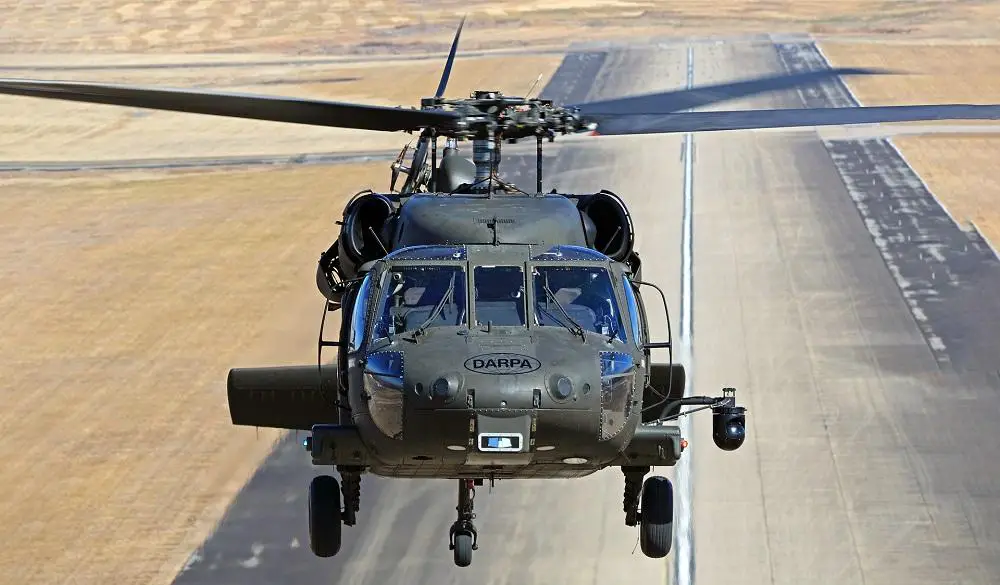Sikorsky, a Lockheed Martin company and the Defense Advanced Research Projects Agency (DARPA) have successfully demonstrated to the U.S. Army for the first time how an uninhabited Black Hawk helicopter flying autonomously can safely and reliably perform internal and external cargo resupply missions, and a rescue operation. Performed Oct. 12, 14 and 18 as part of the U.S. Army’s Project Convergence 2022 (PC22) experiment, the flights show how existing and future piloted utility helicopters could one day fly complex missions in reduced crew or autonomous mode. This would give Army commanders and aviators greater flexibility in how and when aircraft and pilots are used, especially in limited visibility or contested environments. Sikorsky is partnered with DARPA to develop autonomy technology that will exponentially improve the flight safety and efficiency of rotary and fixed-wing aircraft. Sikorsky’s autonomy system, known as MATRIX™ technology, forms the core of DARPA’s ALIAS (Aircrew Labor In-cockpit Automation System) project. During PC22 Technology Gateway, the Sikorsky and DARPA team showed how the optionally piloted Black Hawk helicopter with no humans on board can deliver a large quantity of blood product unharmed by flying low and fast above ground level using the terrain to mask its signature; resupply troops with an external load; and re-route mid-flight to evacuate a casualty.
“We believe MATRIX technology is ready now for transition to the Army as they look to modernize the enduring helicopter fleet, and acquire Future Vertical Lift aircraft,” said Igor Cherepinsky, director of Sikorsky Innovations. In addition to increasing flight safety and reliability, MATRIX technology enables survivability in high tempo, high threat 21st Century Security environments where Black Hawk helicopters operate today, and DEFIANT X® and RAIDER X® helicopters could operate in the future. Uncrewed or reduced crewed helicopters could safely perform critical and lifesaving missions day or night in complex terrain and in contested battlespace.”

To begin the flight demonstrations, pilots flew and landed the Black Hawk aircraft, then activated the MATRIX system to give full control to the flight computer. When the pilots exited, the helicopter autonomously completed the following mission demonstrations:
Long-endurance Medical Resupply: The Black Hawk aircraft flew 83 miles while loaded with 400 units of real and simulated blood – totaling 500 pounds. On reaching 40 miles from its initial take-off point, the helicopter descended into a valley as low as 200 feet above ground level at 100 knots.
Cargo Delivery and Casualty Evacuation (combined mission): The helicopter lifted off with a 2,600-pound external load attached to a 40-foot sling, and flew at 100 knots for 30 minutes toward a designated landing zone. While in flight, the helicopter was redirected, simulating a scenario in which a threat needed to be neutralized near the primary landing site. Sikorsky demonstrated how a ground operator with a secure radio and tablet can take control of the uncrewed helicopter, command it to release its sling load, and then land to evacuate a casualty from a nearby location. Once the manikin on a litter was secured inside the cabin, the ground operator launched the aircraft. During the return flight, a BATDOK health monitoring device integrated with the helicopter’s communications system relayed the patient’s vitals in real-time to a ground-based medical team.

The PC22 demonstrations were the second set of uninhabited Black Hawk flights this year. Sikorsky and DARPA will continue to work toward the transition of this technology for military operations, such as aircrew support and operations, logistics and medical resupply, casualty evacuation, and commercial applications such as firefighting, cargo and urban air mobility. the autonomous BLACK HAWK, equipped with ALIAS (Aircrew Labor In-Cockpit Automation System) begins executing a 30-minute mission. To demonstrate its ability to adapt to a variety of mission environments, the uninhabited BLACK HAWK navigates at typical speed and altitude through a simulated cityscape, avoiding imagined buildings while route re-planning in real time. All the while, on-board sensor simulation provides real-time obstacle data. The BLACK HAWK helicopter then autonomously executes a series of pedal turns, maneuvers and straightaways before completing a perfect landing. Once it shuts itself down, the two pilots approach and re-enter the aircraft. The OPV (optionally-piloted vehicle) switch is reversed from zero to two, and then the pilots taxi back down the runway. This historic BLACK HAWK flight marks the first time that a UH-60 has flown autonomously and builds on recent demonstrations at the U.S. Army’s Project Convergence 2021. It illustrates how ALIAS-enabled aircraft can help soldiers successfully execute complex missions with selectable levels of autonomy – and with increased safety and reliability.













